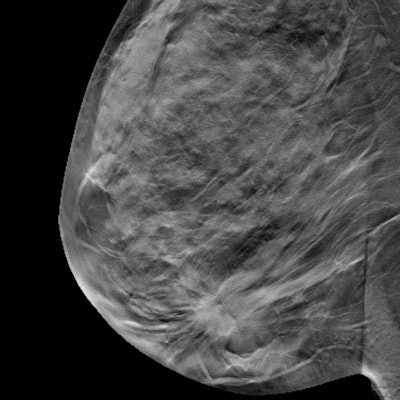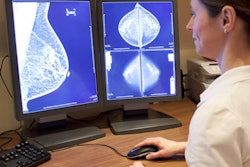
The use of digital breast tomosynthesis (DBT) for breast cancer screening has grown rapidly, from almost 13% of screening exams in 2015 to over 43% in 2017. But DBT adoption is occurring at a faster rate in more affluent areas, according to a research letter published June 24 in JAMA Internal Medicine.
Recent research studies have shown that DBT, also known as 3D mammography, has a number of advantages over traditional 2D digital mammography, such as a higher cancer detection rate and lower recall rate. Evidence is also emerging that DBT could stand on its own as a breast cancer screening technology, obviating the need for 2D mammography.
But apart from recommendations made by the American College of Radiology (ACR), DBT has not specifically been recommended for routine breast cancer screening, noted a group led by Dr. Ilana Richman of Yale University. So the group sought to gather more information about the adoption of DBT and its use for breast cancer screening in a privately insured population (JAMA Intern Med, June 24, 2019).
The group analyzed data on 9.7 million breast screening exams acquired over three years, from early 2015 to late 2017. The researchers found that use of DBT grew rapidly over the period examined, as measured both by the proportion of screening exams being conducted and the percent of hospital referral regions where DBT was the dominant (over 50%) screening mode.
| Growth of DBT as breast screening modality | ||
| 2015 | 2017 | |
| Use of DBT for screening | 12.9% | 43.2% |
| Regions where DBT is the dominant screening mode | 4.6% | 41.8% |
Richman et al then analyzed six patterns of DBT adoption, revealing that DBT was adopted more quickly in areas with higher median household incomes, greater educational attainment, and a greater percentage of white residents.
In a commentary that accompanied the letter, Drs. Joy Melnikow and Joshua Fenton of the University of California, Davis made the case that the rapid adoption of DBT is occurring without evidence from any large randomized controlled trials that demonstrate the technology reduces breast cancer mortality. They noted that five such trials are underway in Europe, the U.K., and North America, and these should provide needed evidence in two to five years.
They further noted that the rapid dissemination of DBT to more affluent areas runs the risk of worsening disparities in breast cancer mortality, and the technology's benefits such as lower false-positive rates would disproportionately accrue to wealthier women. Women might be better served by evidence-based screening approaches and programs that ensure better access to treatment, they concluded.
But racial disparities in breast cancer mortality are driven by a complex interaction of biologic and nonbiologic factors that go beyond just access to screening, according to Dr. Emily Conant of the Hospital of the University of Pennsylvania, who commented on the study in an email to AuntMinnie.com.
DBT is a "better mammogram," she believes, and it's important to increase access so women of all backgrounds may benefit from it. While long-term data on DBT's impact on breast cancer mortality is lacking, plenty of observational data exists on the technology's benefits.
"It's clear that screening with DBT finds more cancers," Conant wrote. "And, while right now we don't have long-term outcomes, certainly finding cancer earlier affords a woman more surgical and treatment options and may be more cost-effective. These factors are all important considerations when determining the impact and cost-effectiveness of DBT."



















